Announcing our case study markets!
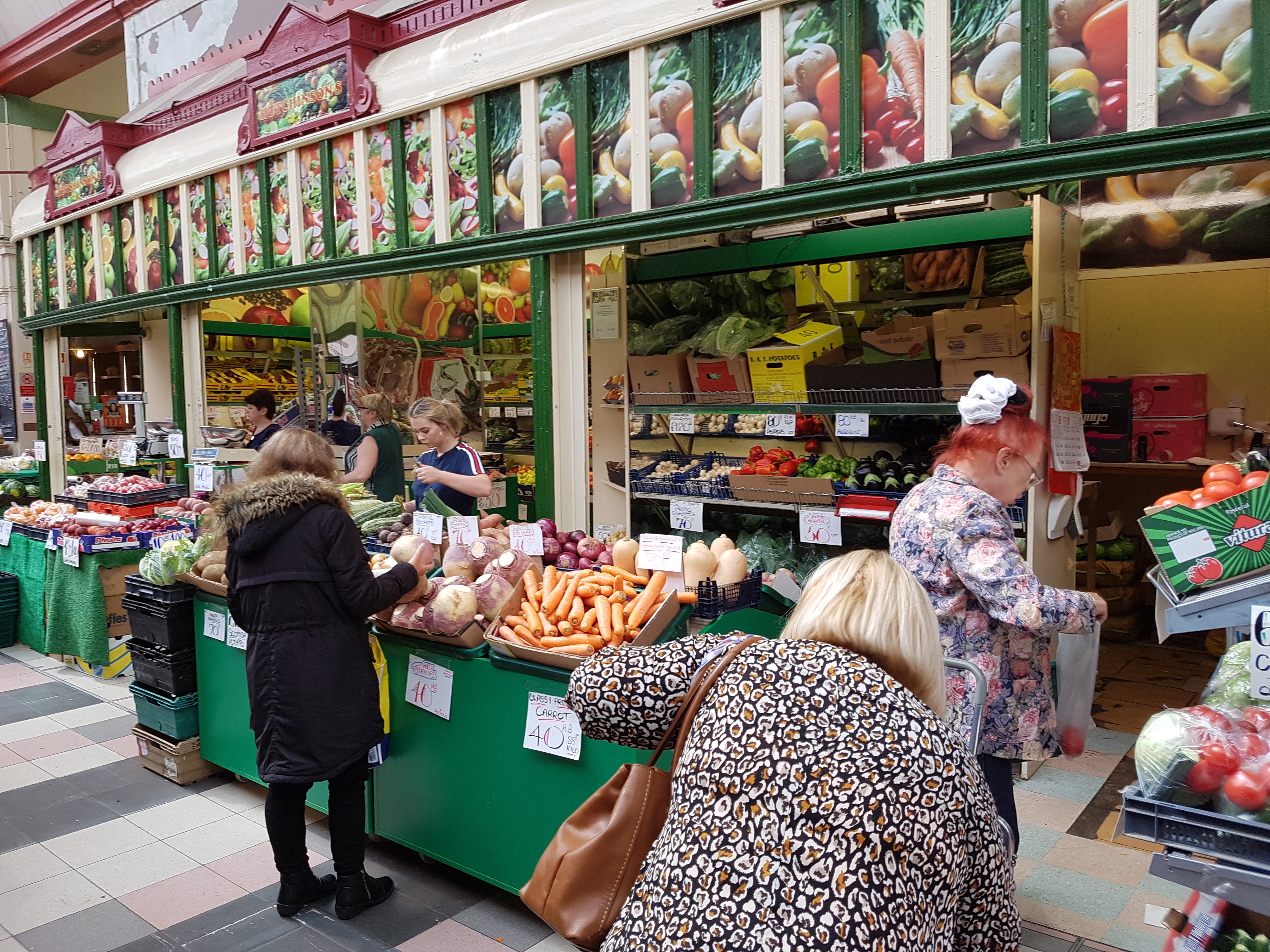
Since our project began in February a major focus for our activities has been to select the three UK general retail markets to use as case studies. At each of these markets we plan to conduct a large-scale survey of 500 market users, to find out who shops and spends time there, and what they think about the market and its value within the community. We also intend to hold focus groups with a selection of market users, to gain a more in-depth understanding of the survey responses.
To narrow our selection and establish a shortlist we identified a number of priorities. Firstly, the market needed to be large enough to enable a survey of 500 customers and, ideally we were looking for a market which drew shoppers from a wider area than just the immediate vicinity. Secondly, we sought out markets with a proactive traders’ committee, comprising a broad and representative mix of traders who were willing to support the research project, along with the market managers. We also considered the diversity of the markets customers, as this will be essential to ensure that our survey yields a rich data set which can inform decision making for the sector as a whole. Perhaps most importantly, we needed to see evidence of community value and a vibrant market serving the diverse needs of those who shop there. Rather than the upmarket, artisan, ‘foodie’ or farmers markets which have come to the fore in recent times, we want to focus on markets serving a broad cross section of their community and explore how they provide a level of support for vulnerable market users and/or minority ethnic groups.
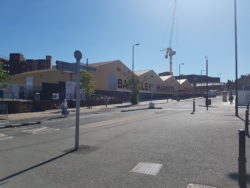
Barnsley Market was on our shortlist.
Having drawn up a shortlist, which included Barnsley, Leeds Kirkgate Market, Bury, Newcastle’s Grainger Market and Queens Market, in the London Borough of Newham, we needed to consider how the three case studies might compliment each other, for instance by offering up a broad geographical perspective or by offering contrasts, to represent the variety and regional idiosyncrasies of the UK’s markets. Though we were wary of involving markets in the middle of extensive refurbishment or major redevelopment, which might lead to a less representative dataset, it was important to recognise that markets are constantly adapting and changing, so we made it our aim to make a final selection which included markets at different stages in their development. In this respect we were particularly keen to identify markets where our research findings and recommendations could have real impact and help to shape their future.
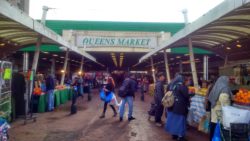
Our first selected case study: Queen's Market in Newham, London.
After a busy few months gathering information through telephone conversations and site visits, and by chatting to traders and operators about daily life within the shortlisted markets we are now delighted to announce that our case studies will be Bury Market, Newcastle’s Grainger Market and Queens Market, London. Following on from previous research (e.g. Gonzalez and Dawson 2017; Dines 2007; NEF 2006 ), we had hoped from the outset to include Queen's Market, one of London’s most ethnically diverse markets, selling a range of goods and particularly specialising in African, African-Caribbean and Asian foods. The council-run market, which plays an active role in community events and initiatives throughout the year, is supported by a committed group of campaigners, the ‘Friends of Queen's Market’ (FoQM), which formed in 2009 to resist plans to demolish the market and lease the site to developers. Though the campaign proved successful (the market is no-longer earmarked as strategic site for mixed use redevelopment in the local plan) its future remains uncertain.
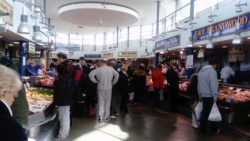
Bury Market was chosen for its traditional character and proactive traders’ association
Our other two markets, Bury and Grainger Market in Newcastle, reflect the north of England’s strong market heritage. In contrast to the super-diverse ethnic mix of Queens Market, these northern markets have a predominantly white, working-class customer base supporting the core of their trade, albeit with aims to diversify and attract new audiences. Bury Market, owned and operated by Bury Council, can claim to be a national favourite, having won ‘Market of the Year’ many times since 2000. As well as being well supported by local inhabitants, the large market attracts coach tours of visitors from across the UK and stalls offer everything from fresh produce and regional specialities to hardware, clothing and electricals. Bury also has a proactive traders’ association, which successfully opposed a proposal to move the market 10 years ago, with some members even standing as councilors.
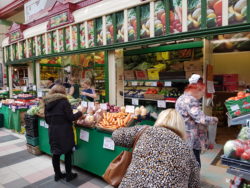
Grainger Market retains its traditional character whilst attracting new audiences.
Newcastle’s Grainger Market, also run by the local authority and boasting an active NMTF traders’ group, stood out to our research team because of the success with which it appears to combine traditional market elements with modern innovations and more upmarket goods. Because of this, the market, with its fourteen entrances from the surrounding city centre, reflects some of the character of Newcastle, where high-end and knockdown appear to rub shoulders quite happily. For instance, while a trader-led initiative to keep the market open late for regular special events may have exposed tensions between long-serving traders and relative newcomers, developments such as this seem to have been broadly successful in attracting new audiences whilst continuing to fulfil its traditional role and provide for existing customers. The management has also made a concerted effort to attract the city’s diverse student population and office workers, who drop in for lunch. In keeping with trends across the UK, many traders have found the last few years particularly difficult and, following budget cuts, the council is now considering ways to make the market sustainable in the long term.
It is our hope that, at Grainger Market, Bury and Queen's Market alike, the data we gather and analyse will help the markets to move forward in a manner which supports the community as a whole, to foster resilience and cohesion. Commenting on the research team’s case study selections, NMTF’s Chief Executive Joe Harrison said:
Bury Market, Grainger Market in Newcastle-upon-Tyne, and Queens Market in Newham are fantastic examples of traditional retail markets that have real community value. In their own ways, they support different local communities to survive and thrive.
Notably, the NMTF has strong connections to the Grainger Market. We have supported the traders’ committee for several years and I am pleased they are on board with this important research project. We welcome the opportunity to develop close working relationships with the traders’ committees in Bury and Queens Markets.
By undertaking extensive surveys with customers, it is hoped that the research team can evidence the social and cultural benefits of traditional retail markets. This has never been done before in our sector and it’s crucial to be able demonstrate this value.
Having established our case studies, our next step will be to agree a plan of activities with the managers, trader groups and community organisations at each market. We are also in the process of devising a survey which will help us to gain a rigorous understanding of markets users’ experiences and tell us more about the different ways in which traditional markets benefit a range of socio-economic groups. We plan to conduct these surveys in March 2019, after a further period of research to establish the unique characteristics and background of each of our case studies and conducting interviews with key figures.
